Why add terpenes to cannabis concentrates or extracts?
As you know, terpenes play a crucial role when consuming cannabis products, as they are directly related to taste, aroma, and effects.
It enhances the entourage effect
If there is a lack of terpenes in a cannabis extract, the effects produced by cannabinoids will be different as the synergy between cannabinoids and terpenes is missing, a phenomenon known as the entourage effect. Additionally, in the absence of terpenes, the taste and smell will be less intense, making the overall experience less enjoyable.
During the extraction process, terpenes are lost to varying degrees depending on the method used, working temperature, etc. Starting with good material for extraction can yield cannabis concentrates or hash with a good terpene profile, but an extra dose of terpenes can provide a definitive touch of quality.
If you have hash, rosin, BHO, or another cannabis extract that either doesn’t have a strong smell or has a rather weak aroma, and you want to enhance it, you can add terpenes to significantly improve quality.
It improves the texture of hash, making it more malleable
Adding terpenes (of your preferred strain) to hash is a growing technique, ensuring a more intense aroma and flavor, and transforming its texture to make it more malleable and “alive.” In this way, these aromatic molecules help turn a medium-quality hash into high quality product easily.
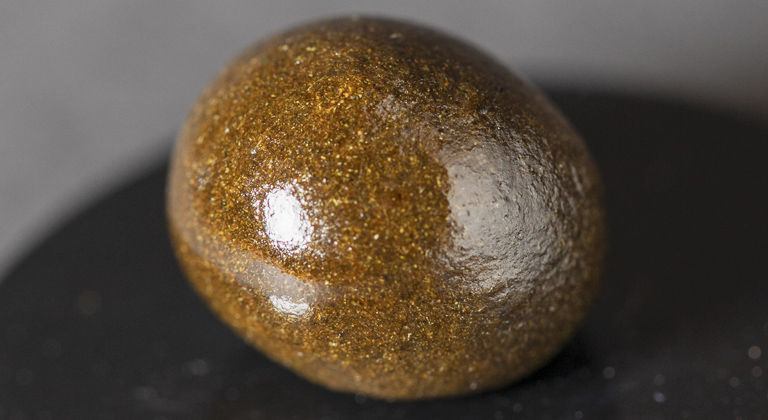
Quality from the source
Cali Terpenes’ terpene profiles naturally enhance the aroma and flavor of hash and other extractions. For example, the same Limonene molecule can be obtained from a lemon or a Haze plant, with the difference that in a lemon, it is found in much higher proportions than in a cannabis bud.
How much should I use?
The recommended amount of terpenes for hash ranges between 0.5% and 4%. It’s highly advisable to conduct tests starting with smaller amounts and waiting at least 24 hours to appreciate the change. Right after adding it, the aroma is too intense, and the flavor won’t be fully integrated.
With time it will settle, transforming its aroma and flavor. Additionally, if you added the terpenes directly, the texture can also change.
The quantity of terpenes for hash or other cannabis extracts may vary depending on the type of extraction you are aromatizing. It also depends on the method used, the quality of the material to be aromatized, and the intensity of taste and smell you want to achieve.
To help you better understand how to add terpenes to different extracts, we’ve prepared a series of video tutorials where we explain, step by step, how simple it is to enhance the aroma of concentrates.
Visit tutorial: Terps Spray and Extracts
Adding flavor to dry CBD extracts is easier than you’d imagine. With simple steps, you can enjoy all the benefits of Cannabidiol and enhance its properties through the entourage effect that occurs when this cannabinoid interacts with terpenes.
Visit tutorial: Adding Terpenes to Dry Extracts
In this tutorial, we provide you with details on how to add aroma and flavor to resins, such as CBD Jelly.
Visit tutorial: How to add terpenes to “jellyhash”
Types of cannabis extracts and added terpenes
There are different types of cannabis extracts, concentrates, and distillates to which you can add terpenes:
Dry extracts: dry sift, hash, kief, pollen
This type of extract (dry hash or traditional hash) is the most common in Europe, especially in Spain, given the tradition of consuming hash from Morocco, which is currently also produced in other countries.
here are different qualities (dry sift and filtered varieties are becoming increasingly popular), depending on the cleanliness or purity of the final product.
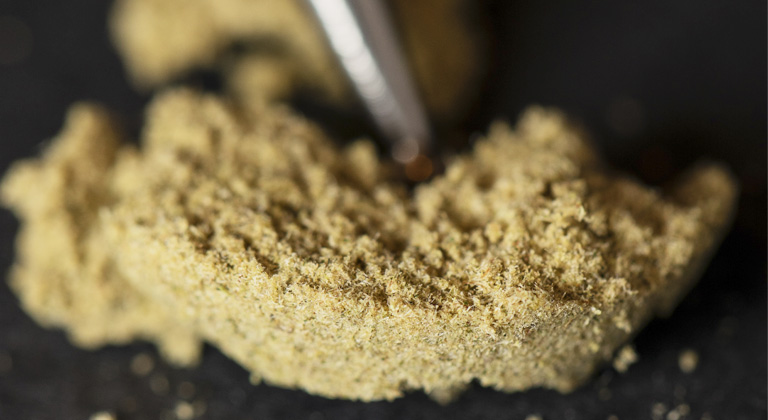
Solvent extracts: BHO, shatter, budder, wax, live resin
BHO is one of the most performed extracts on an industrial level or when dealing with large quantities of cannabis or trim, as it is one of the methods with the highest yield and quality.
However, it’s essential to use specialized machinery and have technical knowledge to perform it correctly and ensure it’s not toxic, as solvents like Isobutane are used in the process.
This type of extract has a high level of cannabinoids, but it does not always have a significant level of terpenes. There is also a rising trend in the production of the famous “live resin” or “diamonds” through solvent extracts.
Terpenes help accelerate this process, in addition to enhancing the aroma, taste, and final effect. The famous battle between “solvent” and “solventless” is known among cannabis consumers and extractors, where some advocate for the use of solvents in their extracts (later removed), while others argue against the use of solvents. In any case, this is one of the most common extraction methods, especially in the American market.
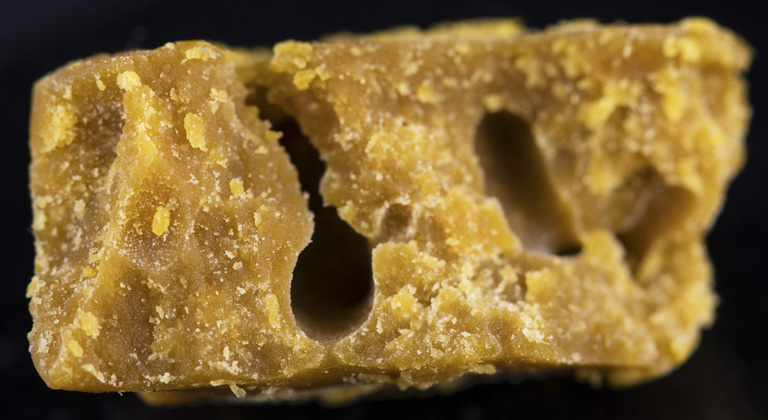
Solventless extracts: Rosin, Bubble Hash, rosin sauce
Solventless extracts are favorites among cannabis consumers because they typically have a better aroma and flavor, remarkable potency, and the assurance that no solvents, which could be harmful if not properly purged, were used in the extraction process.
The most widespread ones are iceolator (also known as bubble hash or water hash), which is done using water, ice, and filtering screens, followed by Rosin, one of the most popular extraction techniques in recent years for being one of the fastest, easiest, and yielding spectacular results.
Plus, terpenes expedite the process of “rosin jam” or “diamonds & sauce,” as this process relies on the pressure exerted by terpenes on cannabinoids and other components of rosin.
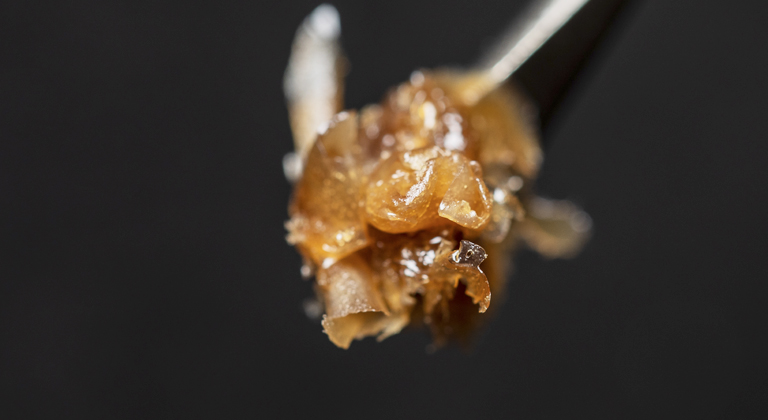
Distillates and isolates: THCA, THC or CBD distillates
THC or CBD distillates, as well as THCA (very popular lately), are essentially cannabinoid concentrates.
The more you isolate a cannabinoid, the higher the concentration and, therefore, the potency. However, there are fewer terpenes, resulting in less aroma, flavor, and entourage effect. That’s why the use of terpenes in these types of products is very common. With the same “base product,” you can obtain many products with different tastes, aromas, and effects.
In our terpene guide, you can find interesting tutorials and videos on how to add terpenes to hash and other cannabis extracts correctly.
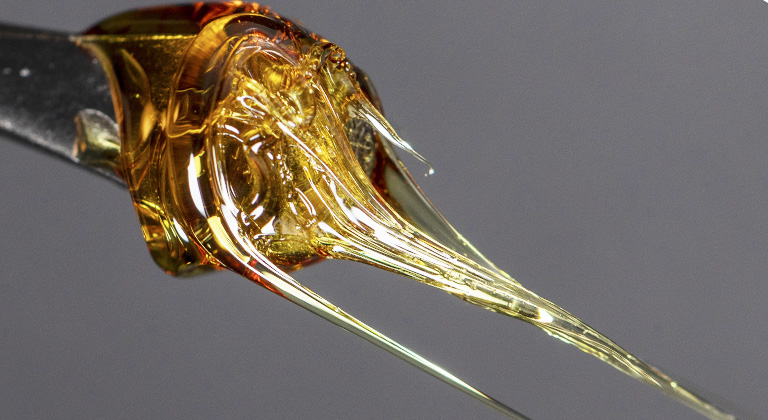
Beta-Myrcene, Hashishene, and traditional hash
There’s an interesting anecdote about one of the terpenes found in traditional hash. This terpene seems to be responsible for the distinctive and cherished smell of this type of extraction.
In 2014, French authorities seized a significant batch of hash coming from the Rif Mountains in Morocco. The police decided to hand over the confiscated product to a group of academics at the University of Nice to attempt to create police device that could detect the presence of cannabis without the use of dogs.
What the scholars found was quite different: a new terpene, produced by the degradation of another terpene. Their findings were published in a study detailing the presence of a new compound known as 5,5-dimethyl-1-vinylbicyclo [2.1.1] hexane.
A new terpene called “Hashishene”
They found large amounts of this terpene in hash samples (up to 14%), while in dried cannabis flowers, this terpene is barely present. As it was an exclusive terpene of hash, they named it “Hashishene” and began researching when and why it originated.
The study’s results determined that Hashihene comes from beta-myrcene, which, when exposed to sunlight, high temperatures, and oxygen, degrades and oxidizes, transforming into 5,5-dimethyl-1-vinylbicyclo [2.1.1] hexane or Hashishene.
The researchers also concluded that many of the minor terpenes found in cannabis are, in fact, oxidized versions of the major terpenes. Examples of these major terpenes include Myrcene, Pinene, Linalool, Caryophyllene, and Humulene.
A good outcome for a study that began with different intentions!
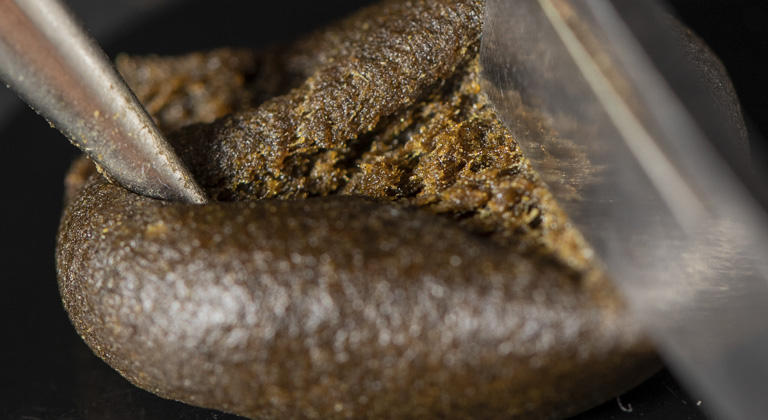
What are the most used terpene profiles for hashish?
The terpene profiles of cannabis (cannabis aromas), most commonly used to flavor and enhance the quality of cannabis extracts, can vary according to the aromatic preferences of the user. If you’re looking for an aroma that’ll transport you to a distant land, with fruity and deep fragrances, you can choose a strain high in Beta-Myrcene, for example:
If looking for other aromas, you can opt for more oriental or “Kush” aromas such as:
For lovers of sativas and “Haze” scents, with more citrusy notes and hints of incense, we recommend:
For those who love citrus scents like orange or tangerine, as well as “Diesel” strains, these would be some of the most recommended:
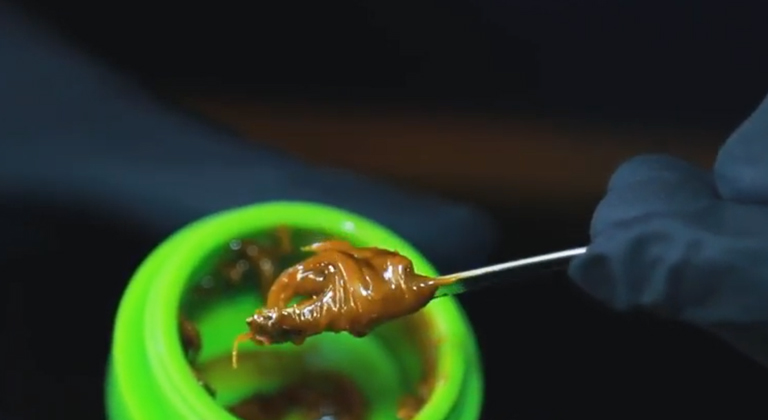
Using terpenes for hash is very easy; our main recommendations are to use an appropriate proportion, not in excess, and allow a few days for exceptional results.
Nowadays, American strains are also highly appreciated because they offer novel and intriguing flavors. Some of the most used ones are:
Some of the latest trends in the main hash-producing country, Morocco, have been precisely American strains—innovative strains with a different and intense fragrance. These strains have been a breath of fresh air for many, including:
On the other hand, some strains have become legendary for their excellent qualities. These are strains that continue to be used despite the years, classics that almost every cannabis consumer has tried:
Top 5 terpenes for hash
After several years on the terpene market, we have identified some strains that, for one reason or another, are the most used terpenes for hash. That’s why we have created a cost-saving pack with the 5 most used hash terpene varieties to date—the Hashtag 1 terpene pack.
Additionally, in the Cali Terpenes packs category, you’ll find various terpene packs classified by their main terpenes, such as the Linalool 2 pack; by the origin of the strains, like the USA 2 pack; and other characteristics, such as flavor, like the Sweet 1 pack.
However, we offer 47 Cali Terpenes profiles that you can use to add the aroma and flavor you like. In the information sheet for each terpene profile, you’ll find the main, such as Linalool, Myrcene, Limonene, Pinene, etc.
Each of these terpenes has different properties, and if you want to delve deeper into this aspect, you can find more information here.
Feel free to visit our tutorials and videos on how to add terpenes to cannabis extractions:
For any questions or if you’d like to share your favorite terpene strain for hash, leave a comment or contact our team through social media, email, or phone.
*Most of the photos have been extracted from the photographic archives of our cannabis experts at Eva Seeds.
Until next time!
Cali Terpenes

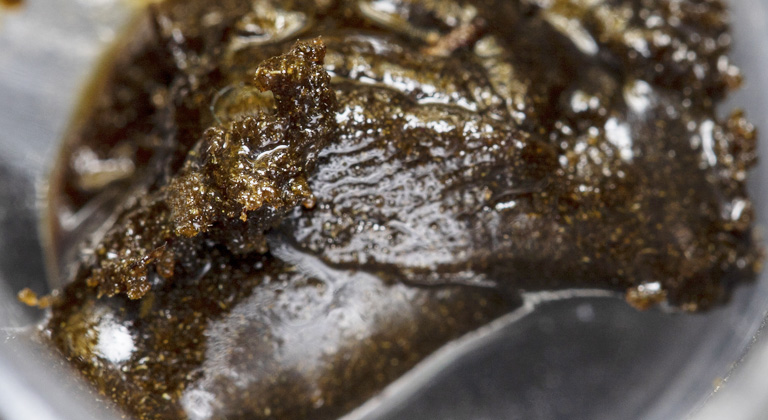
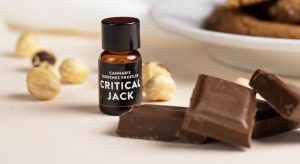



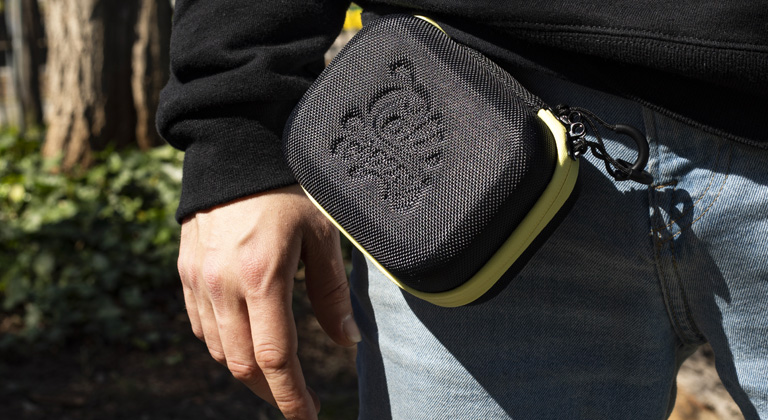
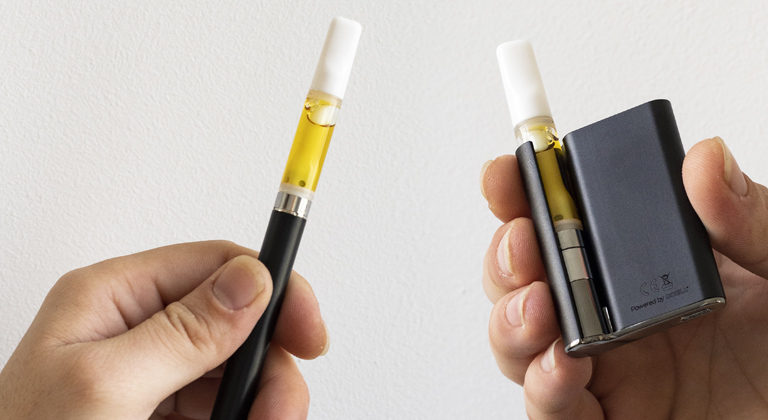


2 thoughts on “Terpenes and Hash”
Hello! How are u?
Do u ship to Brazil?
Hello,
Shipping is complicated, but Belli Roots is importing, so you can contact them in case they have stock.
Hugs,
Cali Terpenes